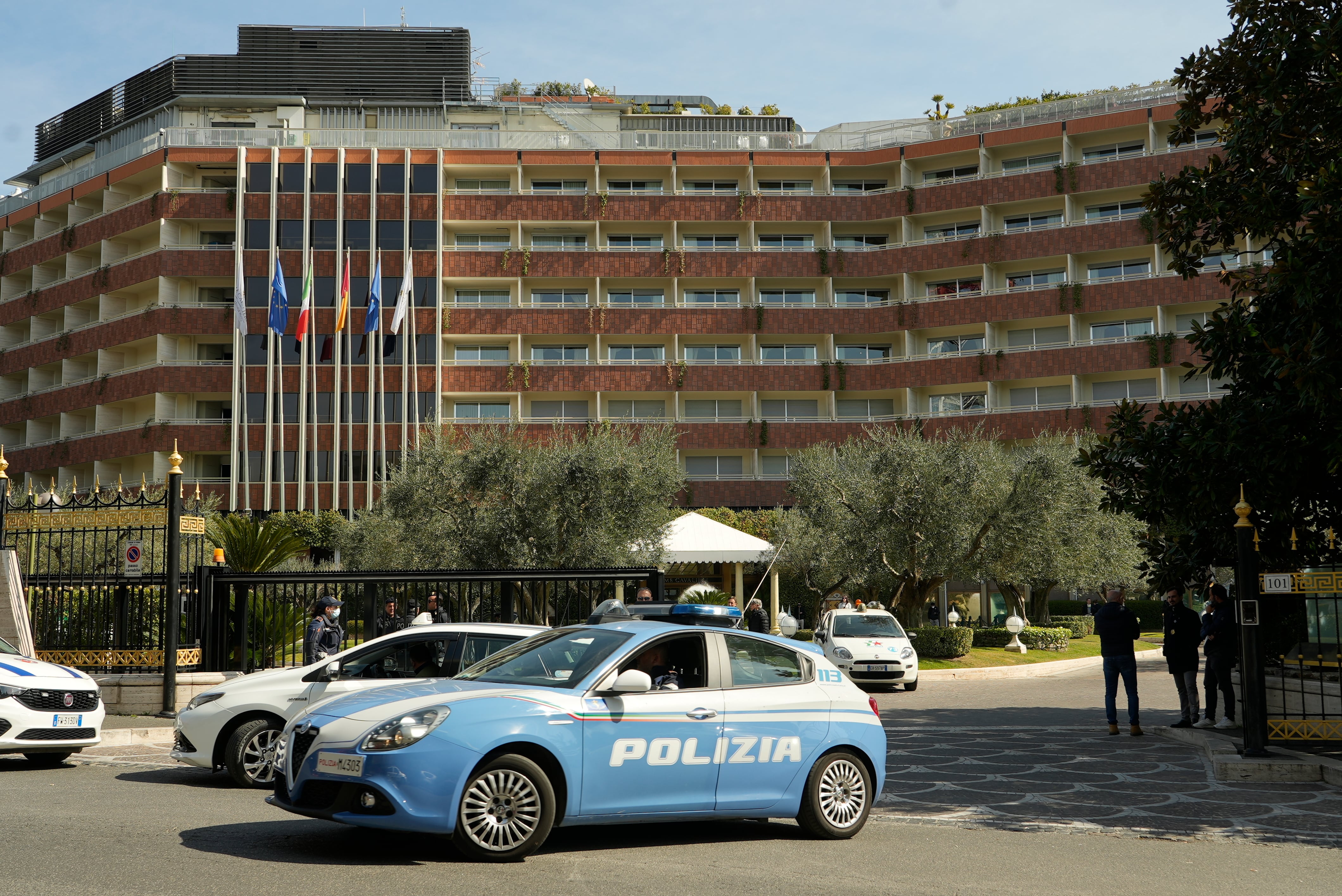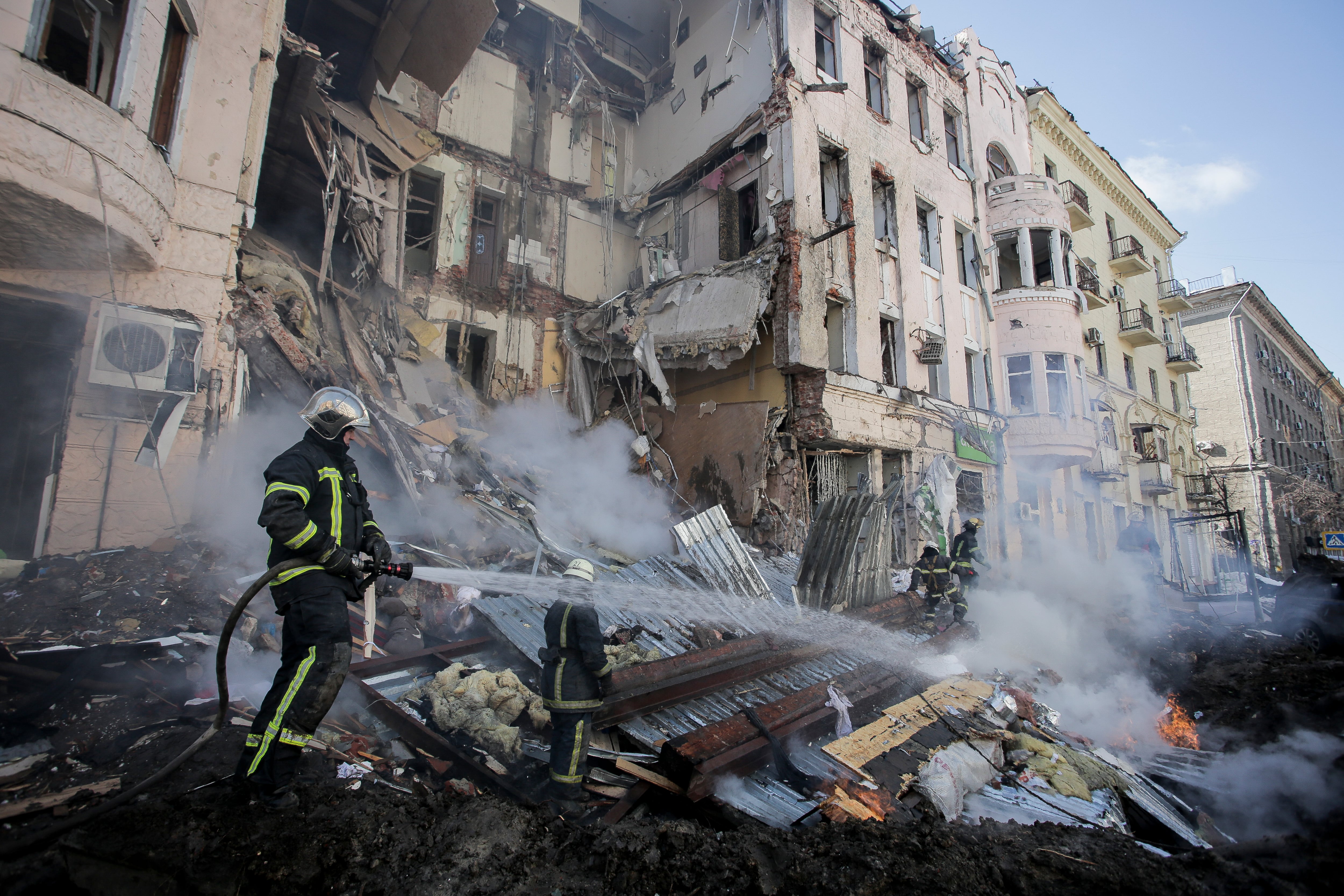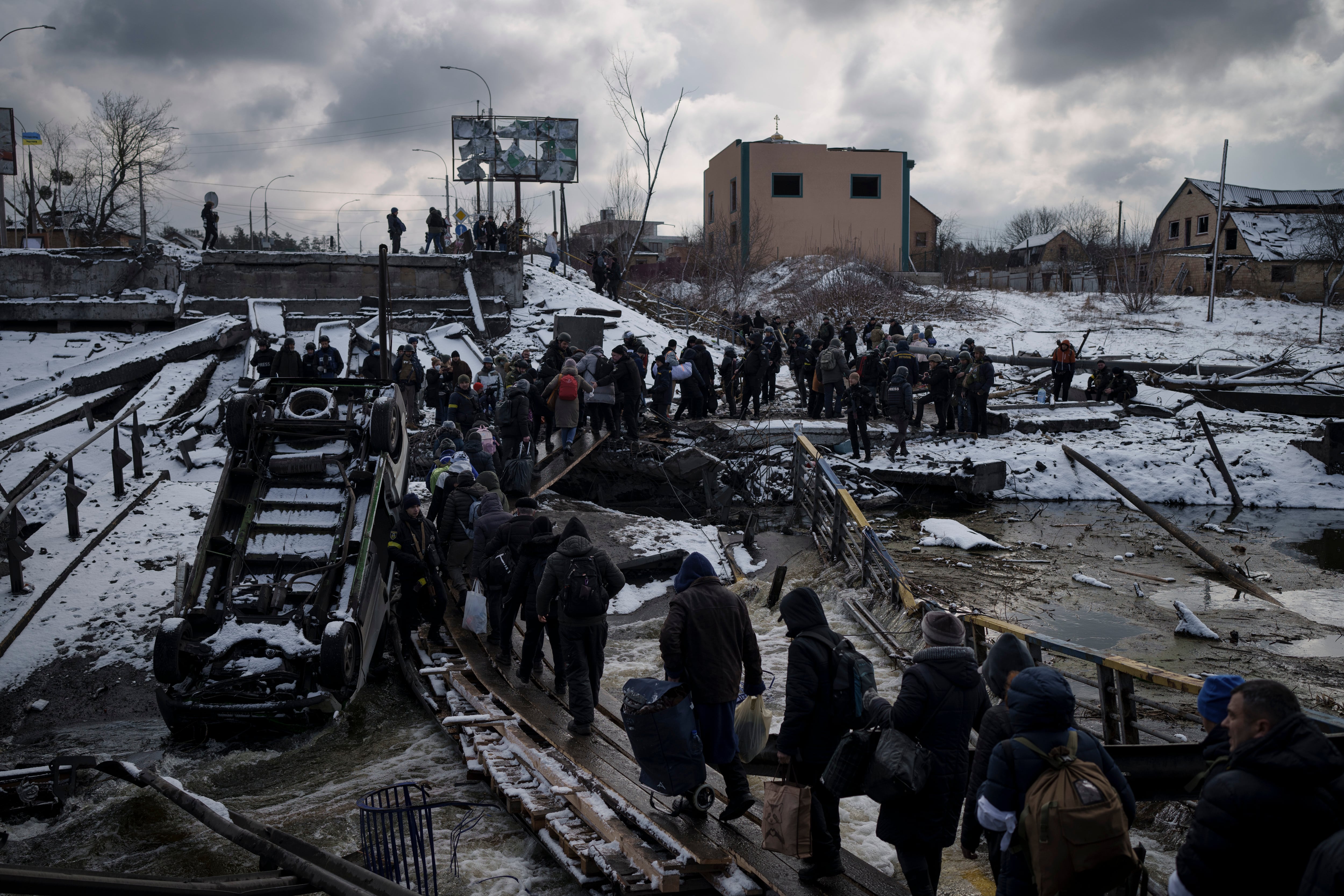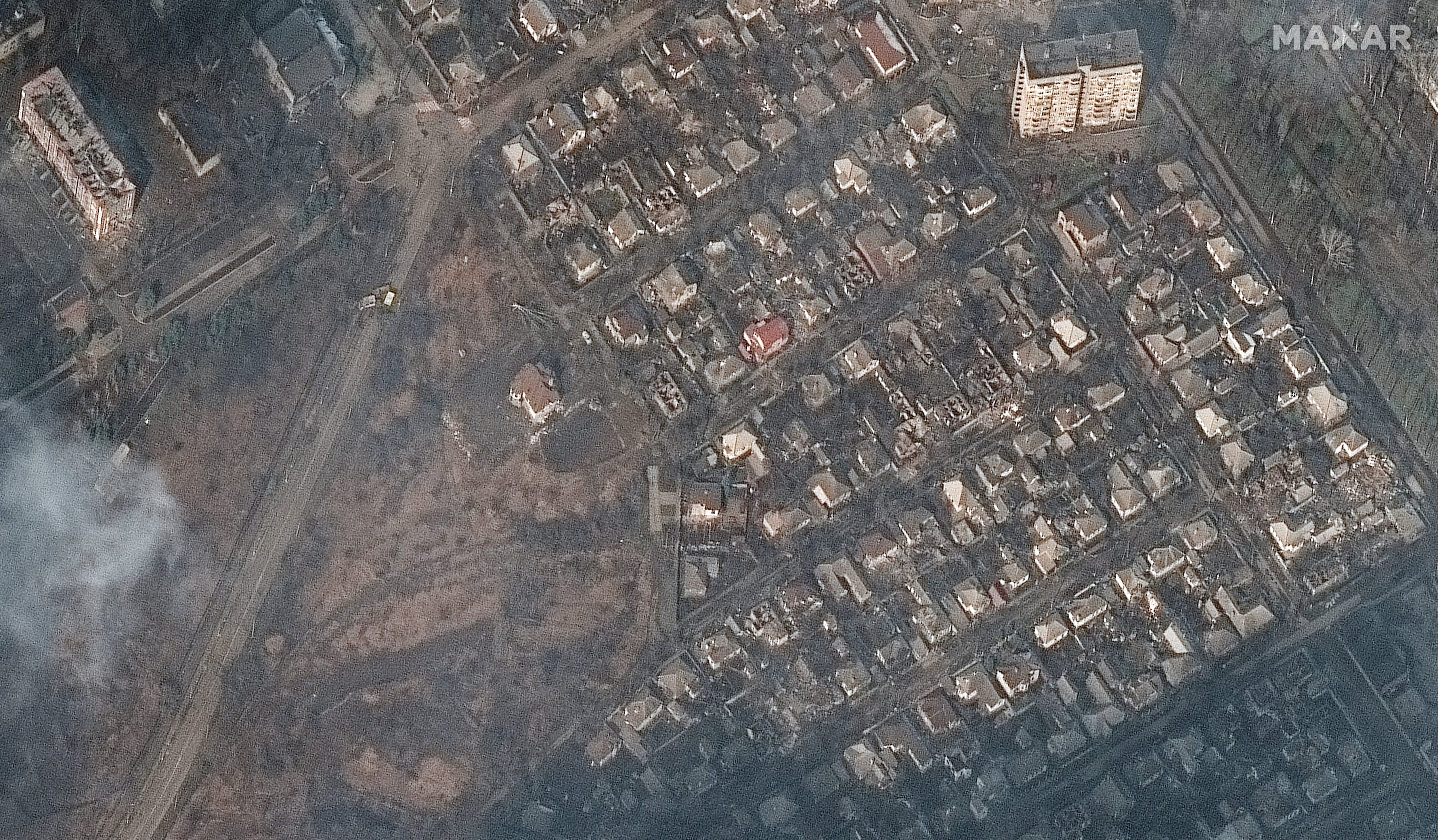For nearly three weeks, top U.S. Air Force officials have closely watched Russian troops advance — and stall — in Moscow’s attempt to reclaim Ukraine.
In recent public appearances, service leaders said their real-time look at Russian capabilities hasn’t given them a reason to rethink existing strategy or spending.
“I don’t know that, for me personally, it’s really changed my perspective,” Air Force Chief of Staff Gen. Charles “CQ” Brown Jr. told reporters March 3 at an Air Force Association conference in Orlando. “We will learn more and more … to really make an assessment of how we need to think about the Russians in the future.”
Russia’s invasion of Ukraine has so far revealed significant problems with its military’s logistics, command and control, and attempts to maintain control of the skies.
Its advance on the capital of Kyiv and other major cities has faltered, though deadly airstrikes on population centers like Kyiv and Mariupol continue to stoke international outrage. Thousands of soldiers and civilians have died since attacks began Feb. 24, and the United Nations’ International Organization for Migration said more than 2.8 million people have fled Ukraine so far.
Russia’s failure to swiftly overrun the former Soviet republic has shown Air Force Secretary Frank Kendall Russia remains a “near-peer” competitor rather than one on par with American military prowess.
He indicated the service’s plans for countering Russia in the 21st century are still underway: among them, to buy F-15EX Eagle II jets to replace the F-15Cs that fly air policing missions to keep Russian planes and other threats at bay; to upgrade satellite surveillance, communications and more in the Arctic, where world powers are jockeying for influence; and to modernize America’s nuclear arsenal for the first time in decades.
The Russo-Ukrainian war so far hasn’t sparked any ideas of new aircraft to pursue, or a major overhaul in how the Air Force trains against notional Russian troops.
”Nothing I’ve seen so far has changed my fundamental impression,” Kendall told reporters in Orlando March 3.
Brown, who was the top Air Force officer in U.S. Central Command from June 2015 to July 2016, noted that watching Russia’s tactics in Syria then offered a preview of how it would approach Ukraine.
He highlighted the Russian military’s use of “brute force” tactics in Syria to subdue cities, and said the international community has raised concerns about similar tactics in Ukraine.
RELATED

Around 300 jets are typically stationed within range of Ukraine in western and southern Russia, along with others relocated to the region in the buildup ahead of the invasion, according to Justin Bronk, an airpower expert at the Royal United Services Institute, a British think tank.
“There was clearly an intent to at least signal their use, especially in light of the Russian military intervention in Syria since 2015, which has been characterized by heavy use of [Russian air force] fixed-wing assets for combat air patrols and strike missions,” Bronk wrote.
Russian troops have garnered plenty of experience with complex air operations while aiding government forces in Syria’s 11-year-old civil war. But it has relied on small aircraft formations — typically one or two planes at a time — in those missions, and different types of jets don’t often fly together, Bronk said.
“Operational commanders have very little practical experience of how to plan, brief and coordinate complex air operations involving tens or hundreds of assets in a high-threat air environment,” he wrote, adding that Russia, unlike Western militaries, doesn’t rely on combined air operations centers to run that process.

Still, Kendall said those woes haven’t diminished Russia as one of the top threats facing the United States — particularly in the nuclear arena.
Years ago, Russia concluded that U.S. conventional warfare capabilities would dominate in a toe-to-toe fight, Kendall said. So Moscow took a different path, instead building up a nuclear stockpile on par with the United States.
Russian leaders have also sought to upgrade their air assets; Kendall noted “they have the numbers and the quality to be a viable air threat.”
In the past decade, the Russian Aerospace Forces have bought about 350 new military aircraft, including the Sukhoi Su-35S and Su-30SM fighter jets and Su-34 bombers, according to Bronk. He noted Moscow has also pushed to upgrade its MiG-31 fighters and Su-25 ground-attack aircraft.
Gen. Mark Kelly, head of Air Combat Command, said at the March 9 McAleese Defense Programs Conference in Washington that Russian-made anti-aircraft missiles are highly capable and can be devastating in the right hands.
“They’re operating pretty well — when they’re operated by Ukrainians,” Kelly said. “The Russians themselves, I think … they’re struggling with fighting with Russian systems, and they’re not adhering to Russian doctrine.”
RELATED

Russia’s forces are most effective when they enjoy control of the skies overhead, but have faltered in the absence of air superiority, Kelly said. The invasion has also been hindered by subpar manufacturing, namely among ground vehicles that have broken down as they move through Ukraine.
“The Russians have a longstanding difficulty with production quality, and I think we’re seeing some of that play out,” Kendall said.
Some Air Force leaders in charge of planning the future force are using Russia’s performance as a cautionary tale.
Lt. Gen. Clint Hinote, the service’s deputy chief of staff for strategy, integration and requirements, pointed to Russia’s difficulties maintaining communications and battlefield command — both of which are necessary to pull off complex maneuvers — as an example of why the U.S. needs to bolster its own such capabilities to defend the NATO alliance.
“If we lose access to space, the joint force loses its coherency,” Hinote said at the McAleese conference. “We are not able to see, we’re not able to communicate and we’re not able to execute the way that we need to be.”
That’s what Russia needs in Ukraine, too, he said.

Focus remains on China
Watching Russia struggle to capture territory inside Ukraine underscores senior Air Force leaders’ focus on China as the top threat facing America and its global allies, while Moscow remains a step behind.
Kendall said in his keynote address at the AFA conference that “despite current events,” the Biden administration’s upcoming twin national security and defense strategies will center on China as America’s leading geopolitical adversary.
In Kendall’s view, it’s not just Russia’s operational shortcomings that make it a second-tier strategic threat: China’s ambitions, and the resources to achieve them, are much greater than Russia’s.
China’s economy is growing and varied, with a gross domestic product multiple times that of Russia, which relies on the extraction of resources like natural gas, Kendall said. It’s bolstered by its economic clout that has created myriad footholds in countries around the world.
RELATED

“They’re both totalitarian states, basically, but I think China has shown through its modernization program that it wants to directly challenge the United States in conventional capabilities,” he added.
The nation wants its nuclear program to stack up against that of Russia and the U.S. as well, Kendall said.
To keep China at bay, Kendall has promised a fiscal 2023 budget that prioritizes investment in areas like advanced weapons, autonomous aircraft and space superiority. Yet, he warned not to discount Russia’s own aggression and influence in multiple countries.
“You cannot ignore Russia,” he said. “It’s very much a national security concern.”
Rachel Cohen is the editor of Air Force Times. She joined the publication as its senior reporter in March 2021. Her work has appeared in the Washington Post, the Frederick News-Post (Md.), Air and Space Forces Magazine, Inside Defense, Inside Health Policy and elsewhere.
Stephen Losey is the air warfare reporter for Defense News. He previously covered leadership and personnel issues at Air Force Times, and the Pentagon, special operations and air warfare at Military.com. He has traveled to the Middle East to cover U.S. Air Force operations.




